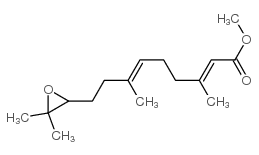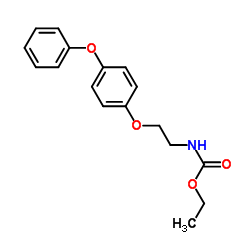Sexual difference in juvenile-hormone titer in workers leads to sex-biased soldier differentiation in termites.
Kouhei Toga, Shutaro Hanmoto, Ryutaro Suzuki, Dai Watanabe, Toru Miura, Kiyoto Maekawa
文献索引:J. Insect Physiol. 87 , 63-70, (2016)
全文:HTML全文
摘要
In termites, the soldier caste, with its specialized defensive morphology, is one of the most important characteristics for sociality. Most of the basal termite species have both male and female soldiers, and the soldier sex ratio is almost equal or only slightly biased. However, in the apical lineages (especially family Termitidae), there are many species that have soldiers with strongly biased sex ratio. Generally in termites, since high juvenile hormone (JH) titer is required for soldier differentiation from a worker via a presoldier stage, it was hypothesized that the biased soldier-sex ratio was caused by differences in JH sensitivity and/or JH titer between male and female workers. Therefore, we focused on the presoldier differentiation and the worker JH titer in species with only male soldiers (Nasutitermes takasagoensis) and with both male and female soldiers (Reticulitermes speratus) in natural conditions. In the former species, there are four types of workers; male minor, male medium, female medium and female major workers, and presoldiers differentiate from male minor workers. First, we tried to artificially induce presoldiers from male and female workers. In N. takasagoensis, the presoldier differentiation rate and mortality was significantly higher in male minor workers. Morphological analyses showed that both male and female induced presoldiers possessed normal soldier-specific morphologies. It was suggested that female workers, from which soldiers do not differentiate under natural conditions, also maintained the physiological and developmental potential for soldier differentiation. In R. speratus, however, no differences were observed in solder differentiation rate and mortality between male and female workers. Second, the JH titers of each sex/type of workers were quantified by high performance liquid chromatography-mass spectrometry in two different seasons (April and December). The results showed that, in N. takasagoensis, JH titer in male minor workers was consistently higher than those in other worker types. In R. speratus, in contrast, there were no significant differences in JH titers between male and female workers. These results suggested that, in N. takasagoensis, male minor workers maintain JH titers at a high level throughout a year, and this may cause the male-biased presoldier differentiation. Copyright © 2016 Elsevier Ltd. All rights reserved.
相关化合物
| 结构式 | 名称/CAS号 | 分子式 | 全部文献 |
|---|---|---|---|
 |
Juvenile Hormone III
CAS:24198-95-6 |
C16H26O3 | |
 |
苯氧威
CAS:72490-01-8 |
C17H19NO4 |
|
Liquid chromatography-electrospray ionization-mass spectrome...
2009-10-01 [J. Chromatogr. B. Analyt. Technol. Biomed. Life Sci. 877(27) , 3175-80, (2009)] |
|
Juvenile hormone prevents 20-hydroxyecdysone-induced metamor...
2014-09-19 [J. Biol. Chem. 289(38) , 26630-41, (2014)] |
|
Regulation of Gene Expression Patterns in Mosquito Reproduct...
2015-08-01 [PLoS Genet. 11 , e1005450, (2015)] |
|
Mapping of the Sequences Directing Localization of the Droso...
2015-01-01 [PLoS ONE 10 , e0133307, (2015)] |
|
Knockout silkworms reveal a dispensable role for juvenile ho...
2015-08-04 [Proc. Natl. Acad. Sci. U. S. A. 112 , E4226-35, (2015)] |